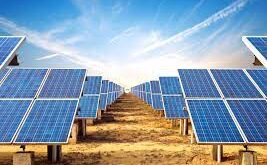Global LNG trade growth is expected to slow to 4% in 2022, following year-on-year growth of 6% last year on the back of strong economic recovery in Asia, the International Energy Agency said Jan. 31.
In its latest quarterly gas market report, the IEA said the LNG demand expansion in Asia during 2021 is expected to moderate this year and the drought-driven rise in South American imports is set to reverse.
Global LNG trade in 2020 was estimated at around 356 million mt by industry group GIIGNL.
A 6% increase last year as estimated by the IEA suggests total trade in 2021 of some 377 million mt and forecast growth to around 392 million mt this year.
In its report, the IEA said Asia would account for all the net growth in LNG imports in 2022.
“China remains the single largest country contributor to import growth, but its growth rate drops to 9% in 2022 due to the ramp-up of pipeline flows from Russia and the overall slowdown in gas demand growth,” the IEA said.
India’s LNG imports are projected to return to their 2020 levels after a temporary dip in 2021, and register a 12% increase in 2022, the agency said.
It added that LNG inflows to emerging Asia are set to expand by 27% this year, driven by the region’s post-pandemic demand recovery, domestic production declines and planned import capacity additions.
European imports
European LNG imports are also expected to remain elevated in 2022 — although likely below 2019-2021 levels — to meet the region’s high restocking needs, it said.
European gas storage stocks are at historically low levels having been built only to around 77% of capacity over the summer, according to data from Gas Infrastructure Europe.
Stocks are currently at around 39% of capacity, GIE data show.
The IEA said import growth in the Middle East during 2022 is expected at 11%, enabled in part by Kuwait’s new Al-Zour terminal, while in Africa imports are set to be fueled by the emergence of new importing countries — Ghana, South Africa and Senegal.
LNG export growth in 2022 remains dominated by North America, which accounts for more than 75% of the net increase in global LNG supply, the agency said.
“The commercial start of Sabine Pass train 6 and the Calcasieu Pass terminal (both ahead of schedule) are the main contributors to a 16% increase in US LNG production in 2022,” it said.
Inadequate supply
LNG markets were tightened in 2021 by inadequate supply, caused both by LNG capacity outages and upstream underperformance, the IEA said.
“Some of this was due to temporary unplanned issues and disruption to maintenance schedules caused by COVID-19 in 2020,” it said.
The tight market last year led to record high spot LNG prices, with the benchmark JKM spot Asian LNG price hitting an all-time high of $56.33/MMBtu in October.
Prices have been lower in recent months, with the JKM assessed on Jan. 31 at $27.92/MMBtu.
The IEA said gas supply adequacy could emerge as a concern for the medium term on a combination of recent LNG project delays, the relatively small number of new LNG FIDs in 2020-2021, and a structural decline in upstream spending since the early 2010s.
“The most visible sign of supply underperformance has been the high level of LNG capacity outages, which spiked in 2020 and remained elevated throughout 2021,” the agency said.
In 2021, it said, the total LNG volume lost to planned or unplanned outages was 53 Bcm, which is equivalent to nearly 9% of nameplate capacity.
“About half of the LNG volumes lost to unplanned outages in 2021 (excluding the long-term disruption in Yemen) were due to upstream issues limiting feedgas availability, with the most severe incidents occurring in Nigeria, Trinidad and Tobago, and Malaysia,” it said.
Project delays could further limit supply availability in the next few years.
“Of the nearly 190 Bcm of nameplate liquefaction capacity under construction as of early 2021, about 20% was ahead of schedule (by an average of eight months), 35% was on time, and 45% was delayed (by an average of 14 months),” it said.
“Delays are especially pronounced for projects that were initially targeting full capacity by 2024, including LNG Canada, Mozambique LNG and Golden Pass in the US.”
The IEA added that the high and volatile spot LNG prices and the recent uptick in LNG contracting activity could set the stage for additional FIDs.
“But the expiry of 150 Bcm of LNG contracts and a projected 14% increase in uncontracted portfolio volumes between 2021 and 2024 could weaken the link between contracting and new project sanctions in this potential next investment cycle,” it said.

 Iran Energy News Oil, Gas, Petrochemical and Energy Field Specialized Channel
Iran Energy News Oil, Gas, Petrochemical and Energy Field Specialized Channel



